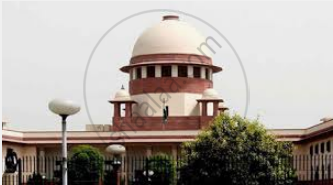Advertisements
Advertisements
Question
Match the contents of Column A with those of Column B:
| Column A | Column B |
| 1. Parliament | (a) village courts |
| 2. Supreme Court | (b) hears criminal cases |
| 3. A District Judge | (c) hears civil cases |
| 4. A Sessions Judge | (d) decides the number of judges in the Supreme Court. |
| 5. Nyaya Panchayat | (e) is the highest court of appeal in India. |
Solution
| Column A | Answers |
| 1. Parliament | (d) decides the number of judges in the Supreme Court. |
| 2. Supreme Court | (e) is the highest court of appeal in India. |
| 3. A District Judge | (c) hears civil cases |
| 4. A Sessions Judge | (b) hears criminal cases |
| 5. Nyaya Panchayat | (a) village courts |
APPEARS IN
RELATED QUESTIONS
Choose the correct answer:
The High Court is the highest court of justice in a _________.
Choose the correct answer:
The______were set up to provide quicker and cheaper judicial services.
Answer the following question in one or two words/ sentences:
Who appoints the Chief Justice of the High Courts?
Answer the following question in one or two words/ sentences:
Why is Lok Adalats becoming popular?
Answer the following question briefly:
The Supreme Court is the highest judicial body in the country. In this context, explain: Why it is called the guardian of the Constitution.
This is a picture of the apex Indian count.

What is the composition of this Supreme court?
Fill in the blank:
The courts at the district level and below it are known as the _____.
Tick mark the correct statement:
The President of India is free to remove the judges of the Supreme Court.
Tick mark the correct statement:
The highest criminal court in the district is the munsif court.
Answer the following question:
Who appoints the judges? What are the qualifications of a Supreme Court judge?
